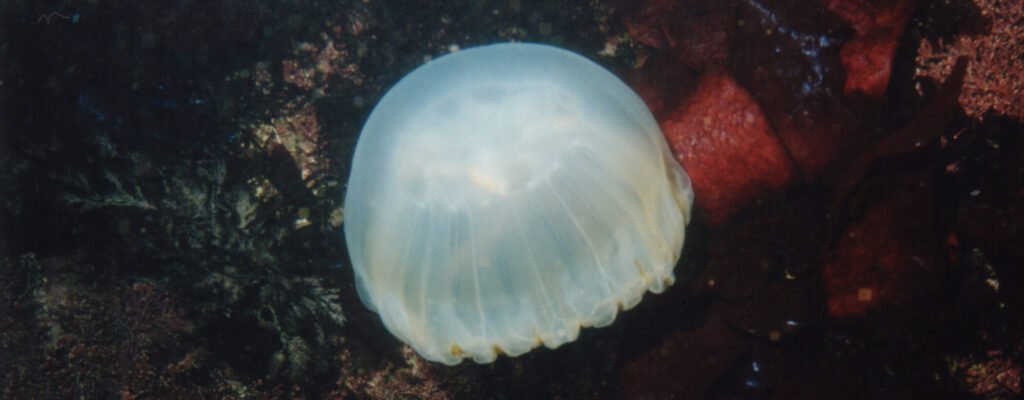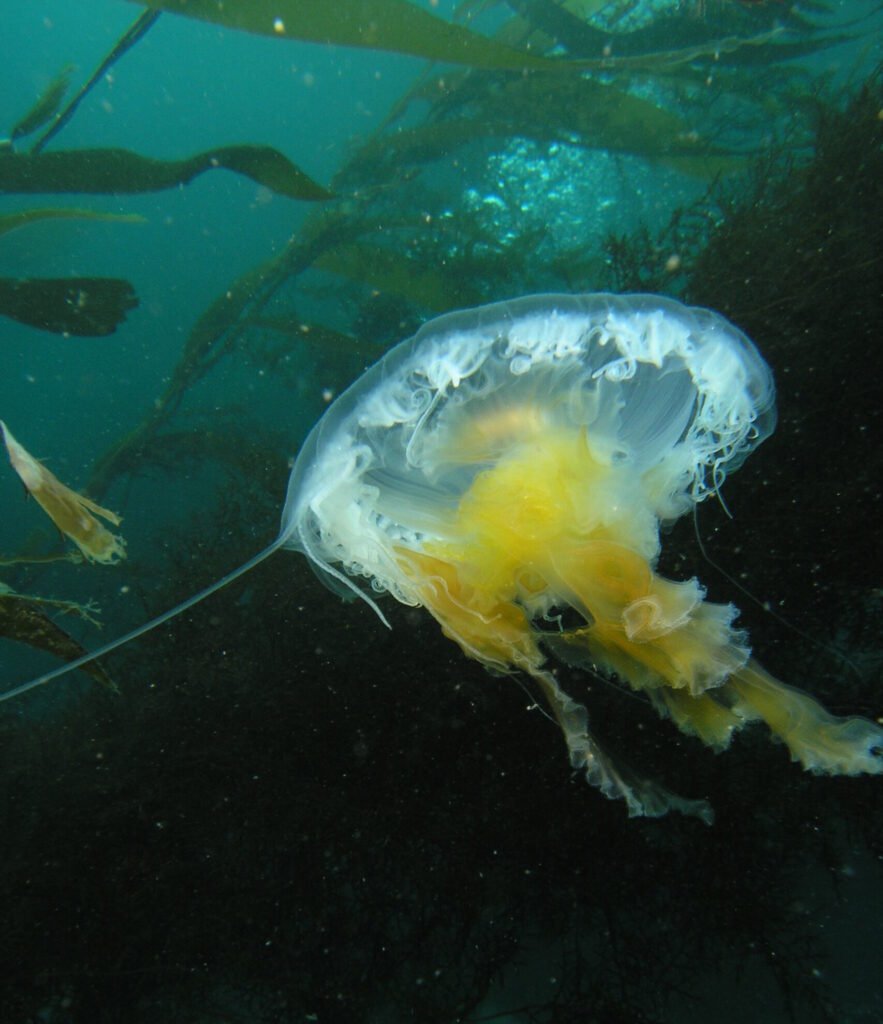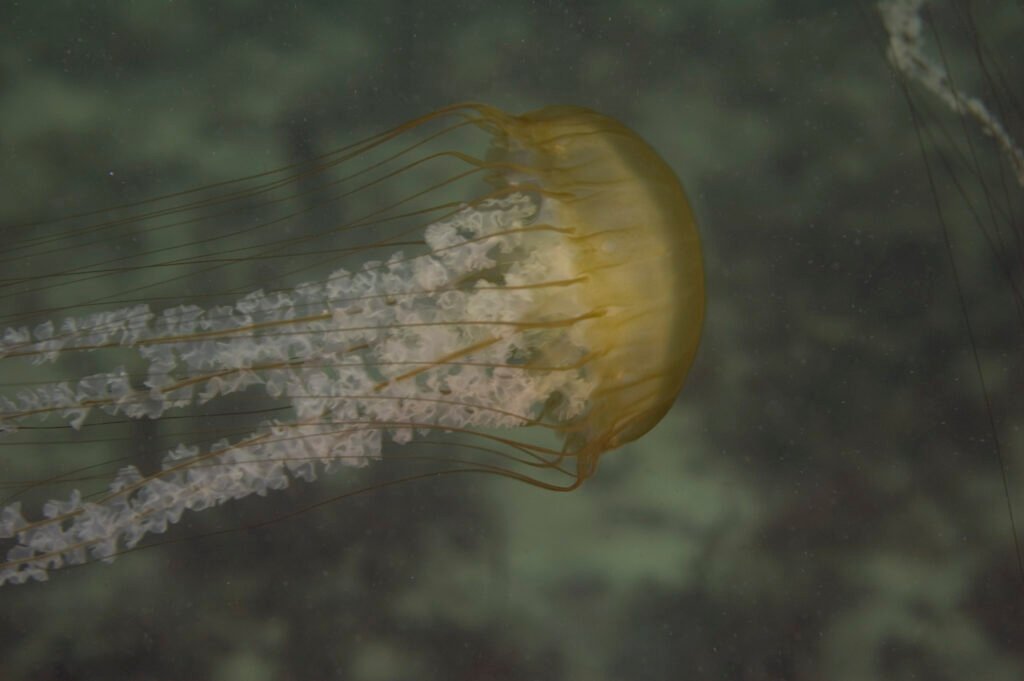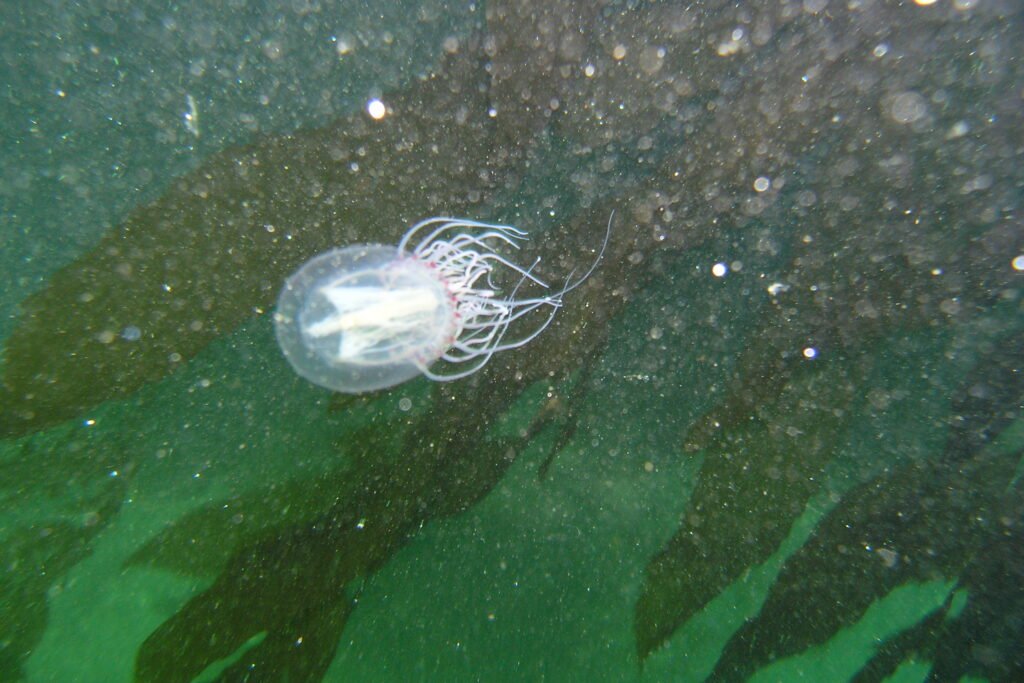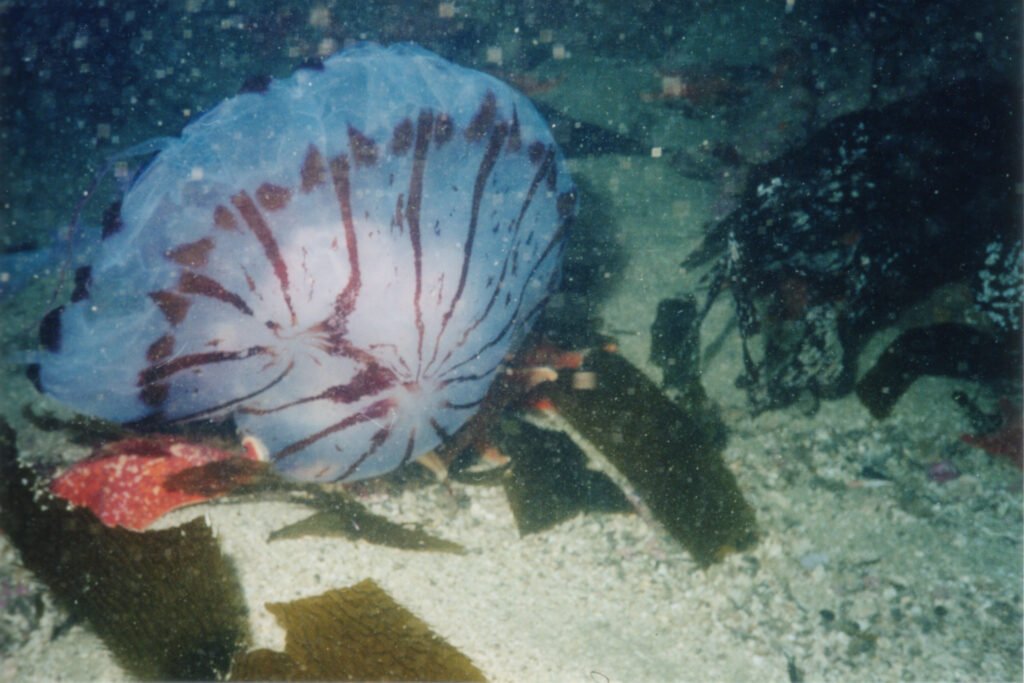Physical Description
The Moon Jelly, Aurelia labiata, boasts a shallow bell up to 40 cm in diameter, adorned with numerous fine tentacles. It features four short oral arms and typically exhibits an opaque white coloration, often with four horseshoe-shaped gonads visible within its bell.
Habitat and Geographical Range
Moon Jellies are commonly found in shallow coastal waters along the eastern Pacific coast. They tend to form dense aggregations, especially during late summer and autumn, and can be pelagic offshore from kelp forests.
What They Eat and How They Breed
Moon Jellies primarily feed on plankton and small organisms, which they capture with their tentacles. They reproduce sexually, with males releasing sperm and females releasing eggs into the water for fertilization. The fertilized eggs develop into larvae, which eventually settle and mature into adult jellyfish.
Physical Threat to Humans
Moon Jellies possess nematocysts capable of delivering a very mild sting. While their sting is generally harmless to humans and causes only minor irritation, caution is advised when handling or encountering them in the water.
